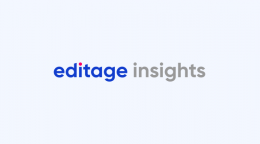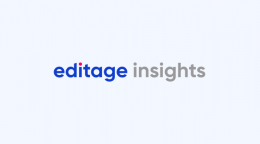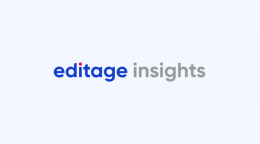Highlights and updates from the 9th Peer Review Congress: An insider's perspective

The 9th International Congress on Peer Review and Scientific Publication (Peer Review Congress) began and ended on a thought-provoking note. The three-day hybrid event, held from 8th to 10thSeptember 2022, saw attendance by key stakeholders in the scholarly publishing industry — editors, publishers, researchers, funders, bibliometric experts, librarians, journalists, science communicators, policymakers, ethicists, and anyone interested in scholarly communication.
The 9th Peer Review Congress showcased presentations of research on different practices and experiments with journal publishing workflows, with the aim of creating an evidence base that includes best practices for the dissemination of scientific research. This year, the three-day-long event featured an impressive array of presentations, including 50 plenary session reports, 86 poster session reports, and 39 virtual poster session reports of original research.
Jayashree Rajagopalan, who is the Community Lead at CACTUS and Co-Chair of Peer Review Week 2022, attended the meeting. Here are some highlights and notes from her attendance at the 9th Peer Review Congress.
Day 1 — 8th September 2022
Day 1 of Peer Review Congress 2022 was all about the key issues of research and publication ethics, misconduct, and best practices in research and peer review. There were also riveting exchanges around topics of gender inclusion, pandemic science, the impact of reviewer discussions, and the issue of paper mills. The plenary session reports on day 1 of the Peer Review Congress broadly focused on four main themes:
Authorship, contributorship, and misconduct: The first segment focused on topics including the prevalence of honorary authorship (according to different authorship recommendations and contributor role taxonomy (CRediT) statements), the use of AI-based tools for detecting image duplication prior to manuscript acceptance, and the effect of alerting authors of systematic reviews and that research they cited had been retracted. The session on publication and collaboration anomalies in manuscripts originating from a Russia-based paper mill generated the most conversation and interest among the attendees.
Diversity, equity, and inclusion: Owing to the growing interest around topics of equal representation and equitable opportunities in peer review, this segment drew interest from most attendees. The sessions highlighted studies on women’s representation in peer review of medical journals. They also featured patterns of gender and international diversity of editors and editorial boards (among journals with open access licenses and open science policies). Factors associated with geographical diversity of invited reviewers, and comparison of reporting race and ethnicity in medical journals before and after implementation of reporting guidance were also discussed. Other presentations covered the association between international editorial staff and international publications in leading biomedical journals.
Editorial and peer review models: The sessions covering this theme showcased pilots of journal submission and peer review processes. For instance, one session shared an analysis of submission outcomes and publication timelines for manuscripts submitted to Cell Press’ experimental community review process compared with direct journal submissions. One of the most engaging sessions examined the impact of positive versus negative reviewer-led discussions on the acceptance rates of papers submitted to a machine learning conference. This study aimed to determine the presence of herding behavior in peer reviewer discussions about whether a manuscript should be accepted or rejected.
Pandemic science: This segment highlighted the importance of dissemination of credible research particularly during a global crisis, in light of the COVID-19 pandemic. The presentations covered topics like the epidemiology of scientific output during the COVID-19 pandemic, and a comparison of the characteristics of COVID-19 and non–COVID-19 retractions. Analysis of updates to living systematic reviews related to COVID-19 versus other subjects, a comparison of preprints and peer-reviewed publications of COVID-19 trials, and abstracts of COVID-19-related randomized clinical trials were also in focus.
Day 2 — 9th September 2022
Brian Nosek, Executive Director, Center for Open Science, set the tone for day 2 of Peer Review Congress 2022 with this highly engaging session introducing a new publishing model — Registered Reports — as a step towards reducing publication bias and enhancing scientific rigor. In this model, an initial peer review is done before completion of the research, which can potentially introduce more meticulous checks as the focus of peer review would be on methodology and design rather than the outcome of a study. Brian’s talk emphasizes the need to shift focus from treating publication as the currency of progress to rewarding best practices, to improve the credibility of research findings.
The other overarching themes for day 2 focused on:
Author and peer reviewer guidance and training: The highlight of this segment was the consensus among the attendees about the need and demand for peer reviewer training, and how it can help widen reviewer pools, and improve diversity and inclusion. The session also shed light on the need for mentoring and clear guidelines for reviewers. Original research presented included statistical guidance to authors at top-ranked journals, reminding peer reviewers of the important reporting guidelines to improve completeness in published articles, and an assessment of a structured and mentored peer review curriculum on the quality of peer review.
Peer review: The highlight of this segment was a discussion on the ways to explore, articulate, and show exactly how peer review improved a manuscript. This will give the process much needed visibility and show real time impact. This segment also features interesting research focused on non-biomedical fields. This included the development of a global dataset for peer review in astronomy; comparison of review scores of computer science conference submissions with cited and uncited reviewers; and association between author prominence and peer reviewers’ willingness to review and their evaluations of manuscripts submitted to a finance journal; and studies focusing on manuscript changes between submission/preprint and peer-reviewed journal publication.
Other segments covered studies on dissemination of clinical trial findings, grant review, and funded research. Day 2 also featured poster presentations, which were held in parallel and covered an interesting set of topics.
Day 2 of the 9th Peer Review Congress ended with an exciting session by Holly Falk-Krzesinski, Vice President, Research Intelligence, Elsevier, who presented a new initiative by Elsevier to develop and test a schema for collecting information on gender, race, and ethnicity in scholarly publishing. The main aim of this project is to drive progress in publishing equality and improve research equity.
Day 3 — 10th September 2022
In the first invited session of the day, Tony Ross-Hellauer, Leader - Open and Reproducible Research Group (ORRG) at TU Graz and Senior Researcher at Know-Center, Austria, talked about peer review in the age of open science. Tony’s session focused on the benefits and downsides of open peer review, stressing the need for more evidence-based studies to better understand peer review. The session underscored the need for better standards to make peer reviews more efficient, accessible, participative, and discoverable.
The sessions that followed centered around the following themes:
Data sharing and access: The focal point of this segment was the series of requests from presenters for being more open to sharing data, making peer review reports open, and exploring ways to increase transparency in research reporting. Some presentations covered topics like prevalence and characteristics of data sharing policies across the health research life cycle and frequency of data and code sharing in medical research.
Day 3 progressed with segments focused on preprints, open science, and social media and citations. The topics discussed in these segments included content analysis of comments on bioRxiv and medRxiv preprints and media attention, Twitter engagement and citations of COVID-19 clinical trial preprints and their corresponding peer-reviewed publications. The open science segment, reproducibility, and post-publication peer review segment saw discussions about open science policies of surgical journals and an assessment of post-publication critique policies and practices at top-ranked journals in 22 scientific disciplines. The social media and citations segment was a particularly interesting one, as it focused on the use of social media to amplify published research and citation practices.
Poster exhibits continued on day 3 with a new set of studies presented. Among them was a presentation by Duncan MacRae, Director, Editorial Strategy and Publishing Policy, Wolters Kluwer Health, which presented a co-authored study with CACTUS. The study evaluated the use of Paperpal Preflight, an AI-driven, free automated web-based tool created by CACTUS to detect common issues that occur at the manuscript preparation stage. It also examined its impact on initial rejection rates.
The highly engaging and interactive Peer Review Congress 2022 displayed a breadth of perspectives. The sessions triggered poignant conversations, indicating that the scholarly publishing community is constantly striving to examine the current processes and exploring ways to introduce efficiencies that will help us disseminate reliable research and ensure robust processes.
Want to know more about the sessions discussed during the 9th Peer Review Congress? The recordings and abstracts of the sessions will be made available on the event website soon.
Comments
You're looking to give wings to your academic career and publication journey. We like that!
Why don't we give you complete access! Create a free account and get unlimited access to all resources & a vibrant researcher community.














